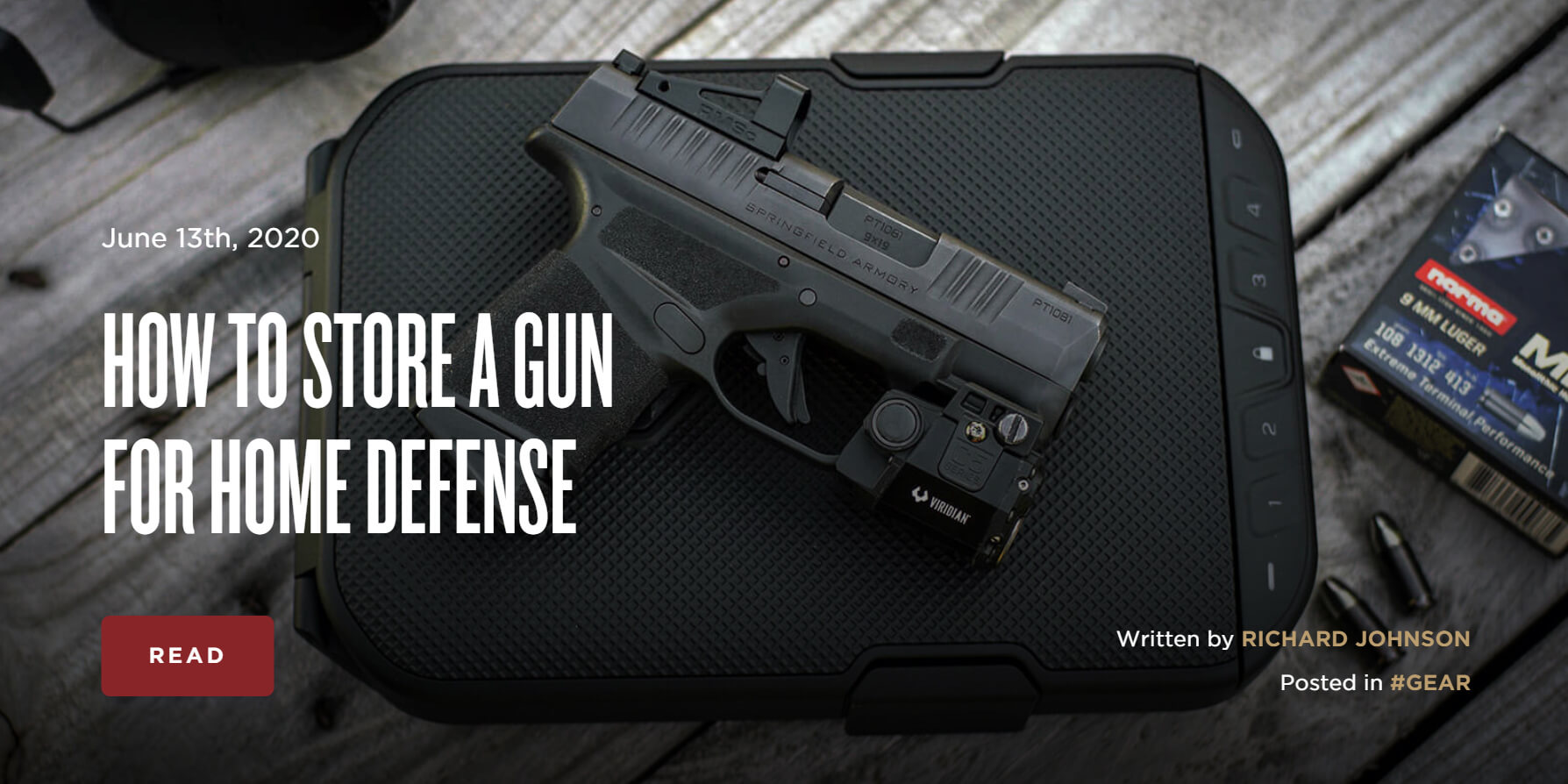Hello all, here is today's article posted on TheArmoryLife.com. It is titled How to Store a Gun for Home Defense and can be found at https://www.thearmorylife.com/how-should-i-store-my-guns/.



Sounds pretty logical to me, though I do store mine muzzle up because my safe is on the 2nd floor and if there ever was a chance of an accidental discharge it would go through my roof not into living space below.“The article said “muzzle down” what is reasoning behind muzzle down versus muzzle up?“
My guess on this Keystone would be to keep oil from leaking down into the action of the rifle, but, it’s just a guess.
If the action is bedded correctly to the stock there is no issue with the weight of the action on the wood.An older fellow who I had much respect for stored his rifles muzzle down. When I asked his reasoning, he said he didn't like the weight of barreled actions resting on the wood stocks. (He had some very fine rifles and DB shotguns) Sounds reasonable, so that's the way I've been doing it for years.
I purchased the simplest of dessicant packs for my safe, a bag that you have to dry out in the oven every now and again, depending on the color of the indicator dots on the box. I live in western Washington, and we do get the rain and humidity. My safe is in the unheated attached garage, and I have never had a spot of rust or corrosion on any of my firearms. I'm in the habit of being in and out of the lock box often, so it's no big deal to pick up the box and check the indicators. If they have turned pink, throw the bag in a 240 degree oven for three hours, indicators turn blue, and your good for another month or two. No containers of water that need to be emptied, either.
Regards,
Bill
You're correct, but many older rifles were not bedded. I have seen examples of older custom rifles whose stocks were meticulously hand fit (even the old single shots like '85 Winchesters, Stevens M52 or 44 1/2, Sharps rifles). Not an ounce of glass to be found.If the action is bedded correctly to the stock there is no issue with the weight of the action on the wood.
I have my Springfield 1911 TRP outfitted to work in the. Laser/flashlight, tactical night sights, next to the bed, in a nightstand safe. I have little ones that come to visit.Hello all, here is today's article posted on TheArmoryLife.com. It is titled How to Store a Gun for Home Defense and can be found at https://www.thearmorylife.com/how-should-i-store-my-guns/.

You can always survive a bullet to the foot. Less likely to the faceI don’t have a second story or a basement. Unloaded rifles go in the safe muzzle up. Loaded rifles go muzzle down. No particular reason, it just feels right to me.
You can always survive a bullet to the foot. Less likely to the face
A CNC machined stock milled to correct tolerances based on the action dimensions requires no filler such as Fiberglass, a filler is used mainly on action surfaces that are done by hand.You're correct, but many older rifles were not bedded. I have seen examples of older custom rifles whose stocks were meticulously hand fit (even the old single shots like '85 Winchesters, Stevens M52 or 44 1/2, Sharps rifles). Not an ounce of glass to be found.
Regards,
Bill
